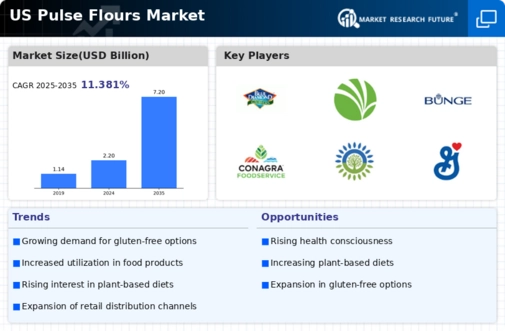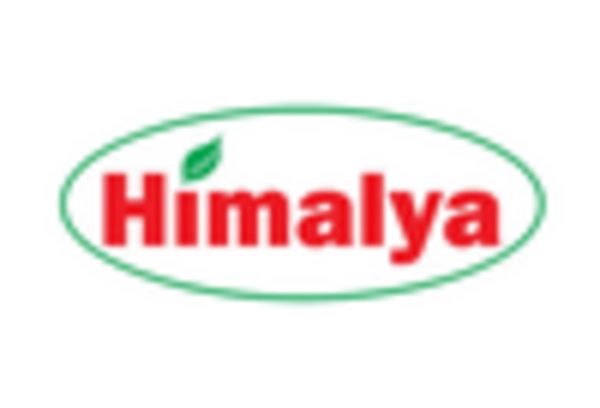Innovation in Food Products
Innovation plays a crucial role in driving the pulse flours market. The introduction of new products that utilize pulse flours, such as snacks, baked goods, and protein bars, is expanding the market's reach. Food manufacturers are increasingly experimenting with pulse flours to create gluten-free and high-protein options, appealing to a broader audience. The pulse flours market is witnessing a rise in product launches, with a reported increase of 15% in new product introductions over the past year. This innovation not only enhances consumer choice but also encourages the adoption of pulse flours in various culinary applications, thereby stimulating market growth.
Supportive Government Policies
Supportive government policies aimed at promoting healthy eating and sustainable agriculture are positively impacting the pulse flours market. Initiatives that encourage the use of legumes and pulses in food products align with the growing emphasis on nutrition and sustainability. The pulse flours market is likely to benefit from these policies, as they may lead to increased funding for research and development in pulse cultivation and processing. Furthermore, government programs that promote plant-based diets could enhance consumer awareness and acceptance of pulse flours. This supportive environment is expected to foster growth in the pulse flours market, as more stakeholders recognize the potential of these ingredients.
Health Consciousness Among Consumers
The pulse flours market is experiencing a notable surge due to the increasing health consciousness among consumers in the US. As individuals become more aware of the nutritional benefits associated with pulse flours, such as high protein and fiber content, the demand is likely to rise. According to recent data, the market for pulse flours is projected to grow at a CAGR of approximately 7% over the next five years. This trend indicates a shift towards healthier eating habits, with consumers actively seeking alternatives to traditional flours. The pulse flours market is thus positioned to benefit from this growing preference for nutritious ingredients, as more food manufacturers incorporate pulse flours into their products to cater to health-oriented consumers.
Increased Availability of Pulse Flours
The pulse flours market is benefiting from the increased availability of pulse flours in retail and online channels. As consumer interest in pulse-based products grows, retailers are expanding their offerings to include a variety of pulse flours, such as chickpea, lentil, and pea flour. This enhanced accessibility is crucial for the pulse flours market, as it allows consumers to easily incorporate these nutritious ingredients into their diets. Recent data suggests that the retail sales of pulse flours have increased by 20% in the past year, reflecting a positive trend in consumer purchasing behavior. The growing presence of pulse flours in mainstream grocery stores is likely to further boost market growth.
Rising Vegan and Vegetarian Population
The pulse flours market is significantly influenced by the rising population of vegans and vegetarians in the US. As more individuals adopt plant-based diets, the demand for alternative protein sources, such as pulse flours, is expected to increase. Recent statistics indicate that approximately 6% of the US population identifies as vegan, a figure that has been steadily rising. This demographic shift is prompting food manufacturers to explore the pulse flours market as a viable option for creating plant-based products. The growing interest in veganism is likely to drive innovation and product development, further enhancing the market's potential.

















Leave a Comment